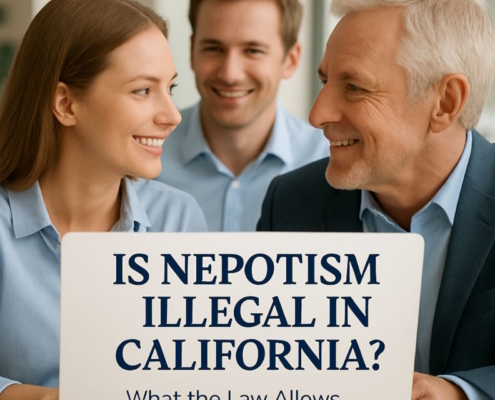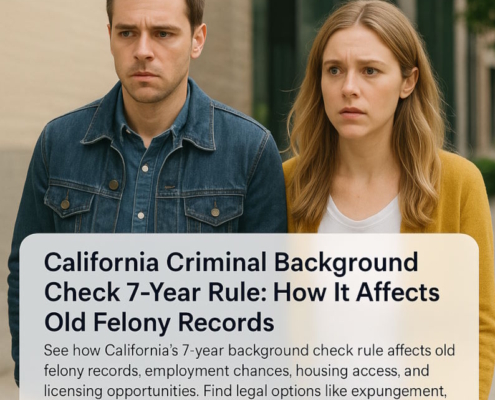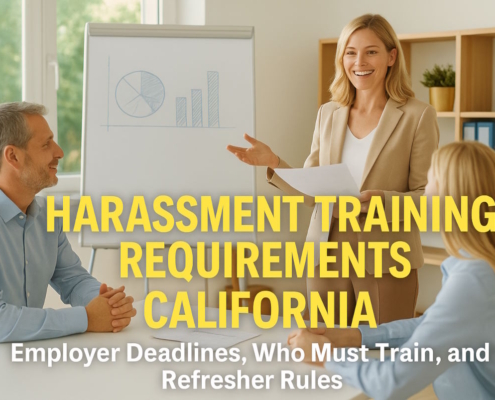Introduction
Knowing the rules governing the separation process is critical for employers, especially in states where they operate. Regarding the requirements for separation notice and the unemployment insurance legislation, there are a number of factors to take into account.
The laws governing the separation of employment and letters of termination differ from state to state. To prevent non-compliance problems, employers should monitor these regulations. When an employee is fired, certain jurisdictions require companies to provide them with a certain form. Usually, these communications advise workers of their eligibility to apply for unemployment insurance. Every state in which they do business has statutory separation notification requirements that employers need to be aware of.
An employee’s rights, such as the opportunity to apply for unemployment benefits, are typically covered in the letter of termination or separation of employment notice. In certain cases, the employer provides the state agency with basic separation facts so that the state workforce professionals handling the claim adjudication can access the original separation information if a worker submits an unemployment claim.
Employers must also be aware of the proper time and method for delivering separation notices. Since promptness is essential to guarantee compliance and prevent fines of any type, employers will have a variety of options for sending these notifications to state labor agencies. They will then select the most efficient approach.
It might be difficult and time-consuming to oversee unemployment compliance in several states. Employers can use expert services to help expedite this process. These services include hearing representation, claims administration, and unemployment cost control. Employers can lower the risk, expense, and effort of managing unemployment claims while maintaining conformity to state-specific laws by collaborating with such lawyers/professionals.
Employers can manage the challenges of multi-state unemployment compliance by being aware of state-specific laws concerning separation of employment and utilizing expert services.
State Requirements for Separation Notice
While the majority of states do not impose fines on employers who do not send a prescribed separation notice, there are certain states that do impose penalties for companies that fail to furnish the required form alerting people about unemployment benefits. Real-time updates are not available for the following information.
1. Louisiana
It should be noted that Louisiana is one state with a statutory mandate. Following a worker’s separation, Louisiana mandates that employers provide a Separation Notice (LWC-77) within a period of 72 hours. This rule will prevent non-charging to the company’s UI account if it is not followed. Within 3 days of separation, LWC-77 must be filled out online, and a copy sent to the departing employee via mail or in person.
LWC-77 is especially useful in chargeability and base-period claims situations. Demonstrating a disqualified separation, promptly responding to the unemployment claim, and submitting Form 77 to the applicant and the state within seventy-two hours are the foundations of chargeability proceedings in Louisiana. If evidence of all three conditions is not available, the company will be billed. The person who fills out the form should designate themselves as the recipient since this is not a reply to a UI claim, and no assessment of unemployment benefits will be made using this form. Following a worker’s separation, Louisiana companies should do the following:
- Online LWC-77 submission
- A duplicate of the Separation Notification and Required Notice to Separating Workers of Eligibility of Unemployment Compensation must be delivered to the separated worker’s last known location within 3 days, or it must be delivered in person.
- Should any disagreements emerge along the workforce process, make a copy of the envelope that is being used to deliver the form.
- Requesting a signature could result in the claimant rejecting the package and not receiving the form.
2. Massachusetts
Form 0590-A, “How to File a Request for Unemployment Insurance Benefits,” must be delivered to a worker within 30 days of their separation, either in person or by USPS, to their last recorded address. The employer will receive a written warning from the aforementioned division for the first infraction of failing to post the details. For subsequent infractions, a civil fine of a hundred dollars will be assessed for the second, $250 for the third, and $500 for the fourth and following violations. The division in question is responsible for collecting and depositing all fines imposed for breaches of this subsection in the General Account.
3. Maryland
Separated workers must get a notification of unemployment availability from their employers via text, email, or letter. The suggested templates are included in the notification. Unless the Secretary forfeits the penalty for good reason, an employer who neglects to file a separation notice or report of earnings under this section will be fined $15 for each missed notice.
4. Michigan
Unless the company is submitting claims on the worker’s behalf, an employee must receive Form IA 1711, “Unemployment Compensation Notification to Employee,” upon separation. At the agency’s guidance, the employer must provide form UA 1711 or a comparable written notification to an employee when the employee is released from employment if the agency determines that the employer did not provide it prior to separation or did not post sufficient notices regarding the substitution of a missed form UA 1711 or a substitute written notice.
If the company fails to give Form UA 1711 or a comparable written notice to the employee by the date of the employee’s separation from work, the agency can charge a penalty of $10.00. The fine will only be applied if the agency notifies the employer of the obligation. Form UA 1711 or the comparable written notice is regarded as a report within the context of section 54(c) (1) of the Act. Under the legislation, the imposition of the punishment specified in the rule in question is a ‘subject to appeal’ matter.
5. New Jersey
Employees who leave for whatever reason must be provided with Form BC-10: Guidelines for Receiving Unemployment Benefits at the point of separation. Although the law was approved in 2023 mandating that businesses electronically submit this document to the applicable state agency and provide it to the departing employee instantly and simultaneously, the NJ DOL has not yet developed specific procedures. Therefore, that law isn’t being applied right now. A $500 penalty or 25% of any wrongfully withheld unemployment benefits, whichever is higher, will be imposed upon enforcement of the provision.
There are no related penalties in California
When an employee’s job status changes in California, especially when they take a leave of absence, employers must also give them written notice. The sample notice, which satisfies the basic standards, is available on the EDD website.
When to give: At the time of separation
Keep Up with State-Specific Separation Notice Regulations
It can be laborious for the in-house HR team to stay up to date on state-specific separation notice specifications, legislative changes, and numerous state-required dismissal letters. It can also expose a company to compliance errors that could result in penalties. Certain Law offices and Employer Services provide compliance form delivery services that boost productivity and compliance while reducing total costs.
A Separation Notice: What is it?
An official document informing a worker and/or the authorities that the person is leaving the company is called a separation notice. State rules for separation notices often act to guarantee that workers are aware of their rights to apply for unemployment insurance, that the state has the correct account and address details for notifying the company, and that there is a mechanism to confirm the veracity of the claimant’s separation information.
What is the use of a Separation of Employment Notice?
A separation of employment notice, which explains the reason for the separation, is given when a worker is fired, either permanently or temporarily. This gives the state the details they require to ensure prompt handling of the claim and helps guarantee the employee has the details they require when submitting an unemployment claim.
FAQs (Separation of Employment)
1. What information must be included in a Separation Notice?
State separation notices differ from one another; some may demand specific data from employers, while others may not. Nonetheless, the majority of state separation notices contain the following details:
- Name of business
- Employer’s mailing address and unemployment account number
- Name of employee
- Date of termination and letter date
- Cause of termination
- Devices owned by the company, including computers or cell phones
- Details of the most recent paycheck
- Details of the benefits, severance, or pay package
2. How much information concerning the separation ought to be on a notice of separation?
Generally, separation notices just need a brief explanation of the cause for the separation, and we advise companies to make this a normal procedure. All information is requested from the employer at the moment the claimant files for unemployment benefits.
3. Giving both a Separation Notice and a Separation Agreement
The employee may occasionally be given a formal separation agreement that includes a payment for the separation, along with a clause stating that they will not pursue legal action in any of the several venues associated with their separation. The key point that should be remembered is that a separation agreement should not include a provision in which the employee is obligated to forfeit their right to apply for unemployment compensation. States vary in the manner in which they treat separation agreements that include a clause stating that an employee would not seek unemployment benefits.
Some states only consider the part of the separation agreement that deals with unemployment to be void; others declare the entire agreement void if it contains an exclusion of unemployment benefits; and still others make it a criminal misdemeanor for the employer to exclude unemployment benefits from a separation agreement.
4. Does a written notice of separation have to be given?
A written notification of separation is required in the majority of situations. Electronic notices of separation, however, might be permitted in some states.
5. Is a Separation Notice an indication of termination?
No. Separation Notices must be given in both voluntary & involuntary separations, regardless of the cause, as they are mandatory irrespective of the reason.
6. Can future employment be affected by a Separation Notice?
Giving a written notification communicating the separation of employment has no bearing on an employee’s ability to be hired again because it is necessary in some circumstances that may be temporary, like a brief dismissal or leave of absence, or when an employee resigned for private reasons and would be a valuable addition if they applied again in the future. This information would be kept in your HR records for future use in the event that the employee reapplies, although eligibility for a second chance is not necessary information on the majority of state separation notices.































